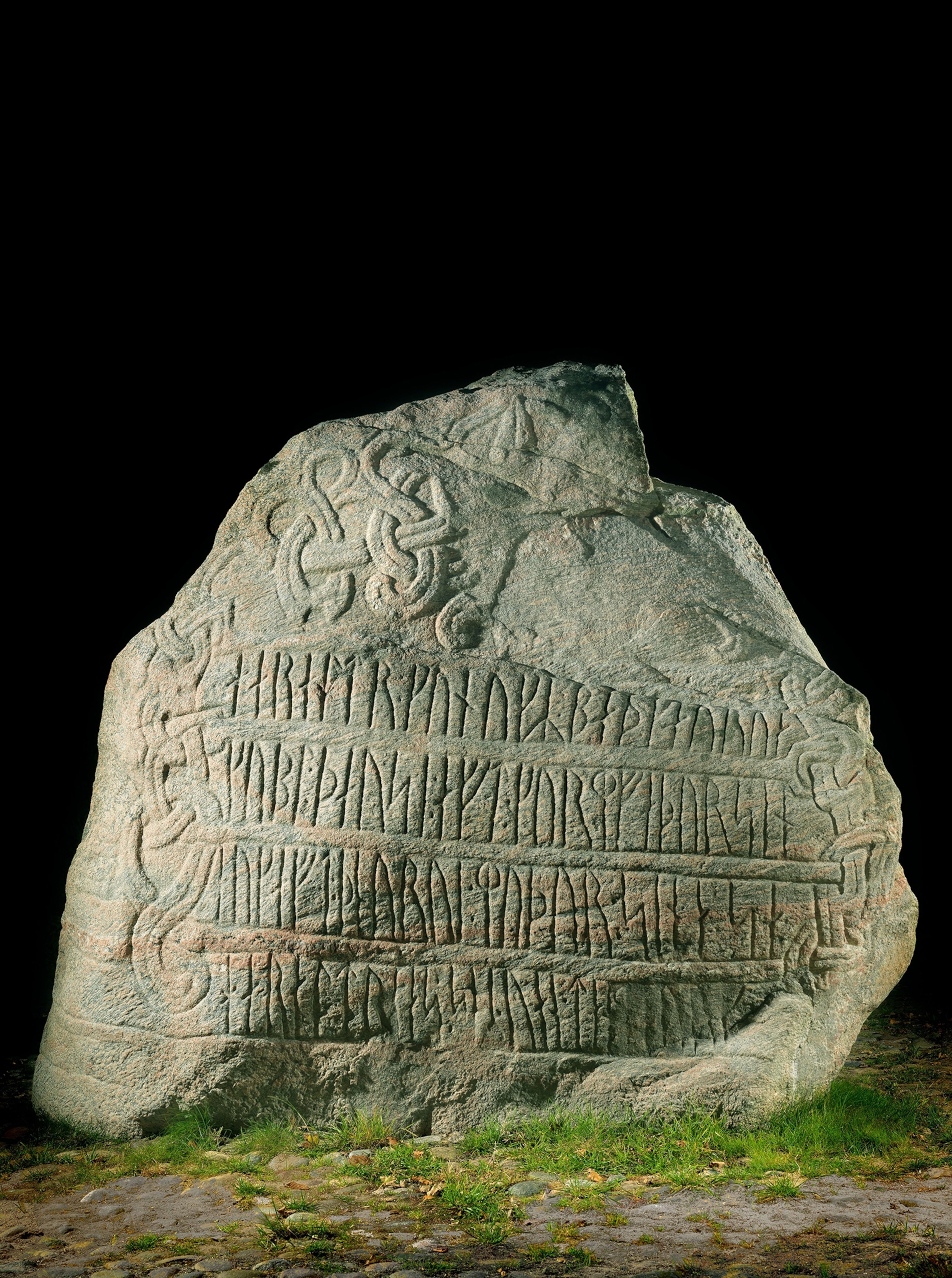New research on 1,000-year-old inscriptions suggests that the wife and mother of two Viking rulers may have been much more powerful in her own right—perhaps even a leader of the early Danish realm.
In a study published today in Antiquity, scientists provide a new analysis of Denmark’s Jelling runestones—inscribed stone monuments carved more than a millennia ago to commemorate the Viking king Gorm the Old, his wife Thyra, and the actions of their son, king Harald Bluetooth.
The Jelling Stones, located in the eastern Jutland town of Jelling, contain the earliest mentions of Denmark as a political entity. The smaller and older runestone, with an inscription written in the runic alphabet, was erected by Gorm around A.D. 950; the inscription on the larger Jelling Stone, commissioned by son Harald Bluetooth, also records Denmark’s conversion from Norse paganism to Christianity in 965 and is considered by many to be Denmark's "birth certificate." (Harald Bluetooth’s name is best known today as a networking standard for wireless communications.)
Read the rest of this article...
